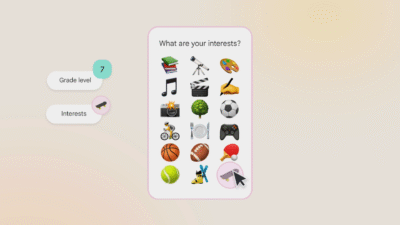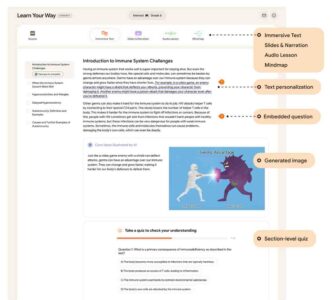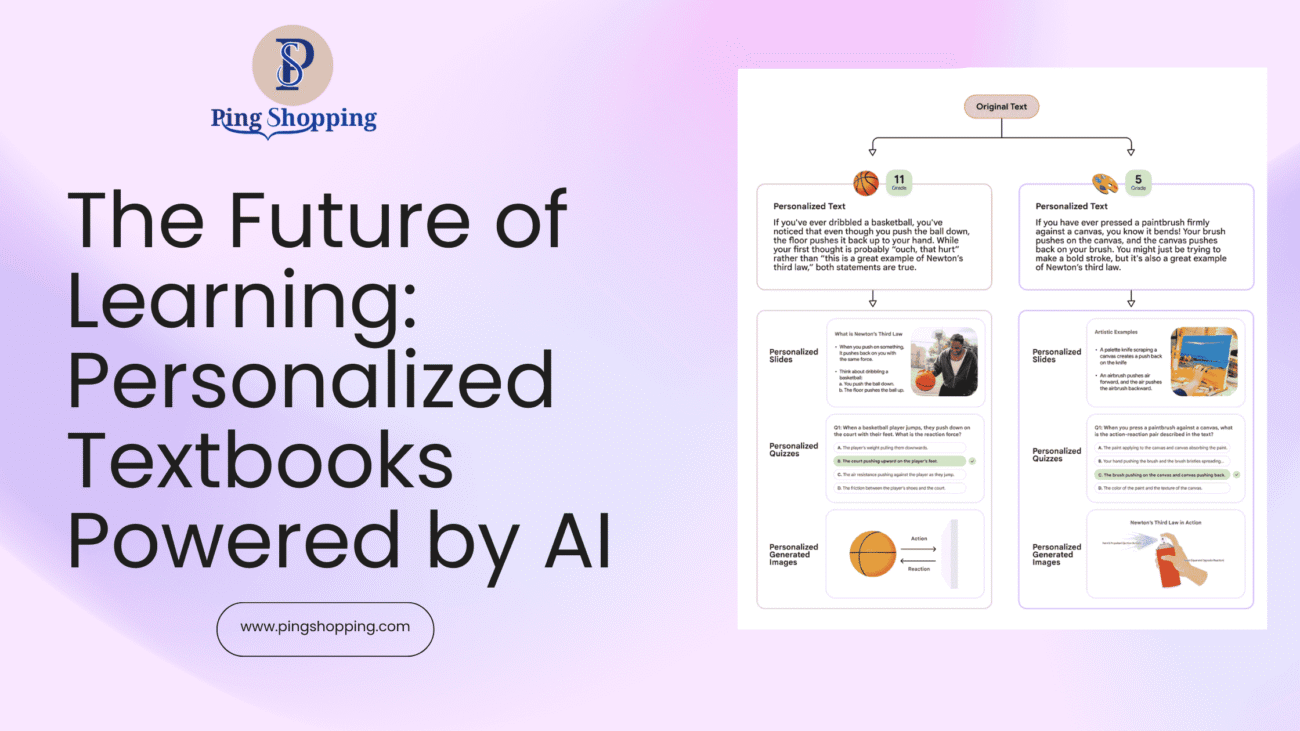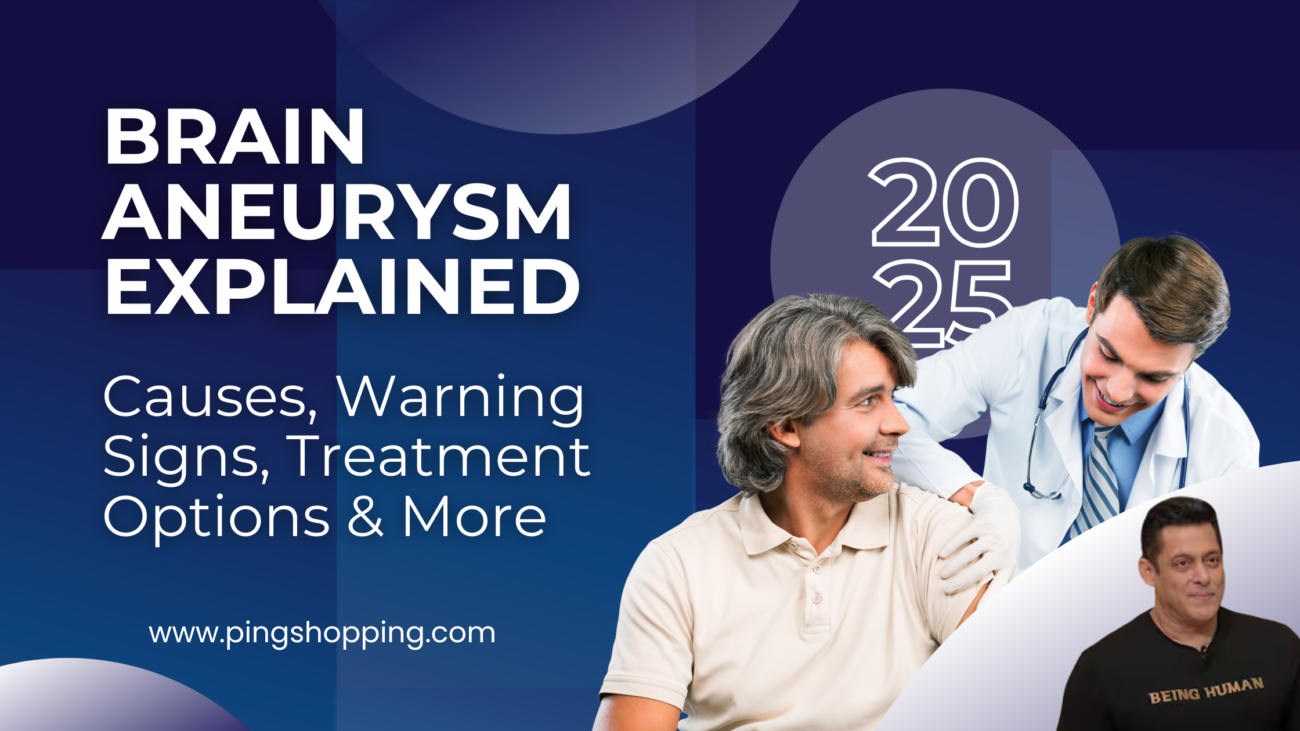In an era where people are highly reliant upon textbooks for learning, AI is transforming this completely. For years, textbooks were the backbone of learning. They acted as the starting point for millions of students in learning a new subject. But let’s admit this! Traditional textbooks don’t come with a one-size-fits-all approach. This is where Generative AI comes into play.

The content is well-constructed and carefully curated, but it fails to accommodate the diverse learning styles of learners. Some learn best using pictures, others using explanations over audio, and most do well with practice questions and immediate feedback. Unfortunately, most textbooks don’t include these options, and students must go through the content with limited room for variation.
Generative AI enters the picture. A group at Google Research has been working on a project called Learn Your Way, a new interactive method to take static school materials and turn them into customized, multimodal learning experiences. The initial results are encouraging—and they might represent a genuine revolution in the way that students learn
Why Textbooks Need Reinventing?
Authors and educators spend years compiling and structuring content, but the finished product ends up serving as a compromise. It’s structured to be broadly accessible, which means it rarely feels personal or adaptable.
If you’re a high school student interested in sports, wouldn’t Newton’s laws make more sense when explained through examples from basketball or soccer? If you’re musically inclined, wouldn’t a physics principle be easier to understand when tied to sound waves or rhythm?
This is exactly the sort of individualization that Learn Your Way seeks to unleash. Through the use of generative AI, the platform can re-grade content to a student’s level, substitute generic examples with interest-specific ones, and then create various formats in order to reinforce learning.
The Science Behind the Approach
The project has its roots in the learning theory of dual coding theory, which states that individuals learn more effectively when presented with dual representations. Reading, for instance, about some past event is something, but then visualizing it as a timeline or hearing it explicated in a narrated slideshow engages different areas of the brain. Learn Your Way expands upon this principle in two fundamental ways:
- Multimodal Representations – Rather than only text, the site creates images, narrated slideshows, audio lessons, mind maps, and in-text quizzes.
- Personalization – Examples, illustrations, and even the reading level are adjusted to suit each student’s background and interests.
The outcome is an educational experience closer to having a private tutor than reading from a textbook.
How does the Technology work?
At the heart of Learn Your Way is LearnLM, a set of pedagogy-enriched AI models that are embedded in Gemini 2.5 Pro. This enables the platform to ingest a source material (e.g., a PDF textbook) and reconstitute it as an interactive version optimized for various learners. This is how the pipeline works:

- Personalization First: Students input their grade and some interests. The AI re-levels the content to the right reading complexity and substitutes relatable examples.
- Content Transformation: After a personalized generation, it acts as the foundation to make multiple forms.
- Refined Visuals: Because generic AI image models can’t produce good educational diagrams, the team trained a dedicated model for drawings with accuracy.
What does the Experience feel like?
Students on Learn Your Way don’t scroll through an electronic PDF. Rather, they engage with content in formats that encourage active engagement:
- Immersive Text: Bitesized chunks of material are divided into sections with images and questions embedded.
- Quizzes at Every Step: Regular section-level quizzes provide instant feedback and identify areas to be reviewed.
- Slides & Narration: The platform generates presentation-style slides with fill-in-the-blank exercises, as well as narrated lessons in the style of a classroom lecture.
- Audio Conversations: Students can hear AI-simulated teacher-student conversations, complete with explanations of frequent errors.
- Mind Maps: Ideas are laid out visually so that students can zoom in and out of details or step back to catch the overall picture.
Putting It to the Test
Naturally, innovation is only valuable if it enhances learning. To experiment with Learn Your Way, Google Research conducted a randomized controlled trial with 60 Chicago high school students. Half learned a chapter about teen brain development using Learn Your Way, while the other half learned using a standard digital reader.
The findings were startling:
- Students with Learn Your Way averaged 9% higher scores on immediate quizzes.
- They did better in retaining information, achieving 11% more on subsequent tests three to five days later.
- All the students in the Learn Your Way group indicated that they felt more at ease with the test.
- 93% indicated they would like to use the tool again, compared to 67% using the traditional reader.
These results indicate both cognitive and affective advantages: not only did students learn better, but they also felt more confident in their learning.
Why This Matters?
Learn Your Way offers a richer vision: one where textbooks become living, interactive books that adjust to each student’s requirements. If mass-produced, this would revolutionize accessibility. A student from a rural town would receive the same adaptive, multimodal experience as one receiving private tutoring. It also paves the way for continuing learners, who can adjust content to fit their own interests instead of adhering to rigid examples.
Final Thoughts
With generative AI, we can transform them into living, adaptive friends that enhance the learning process to be more fun, effective, and personal. Learn Your Way’s initial success suggests that the future of learning may not be as much about memorizing from a thick book, but rather about crafting an interactive path—one that adapts to meet the learner, not vice versa.
Source: https://research.google/blog/learn-your-way-reimagining-textbooks-with-generative-ai/





